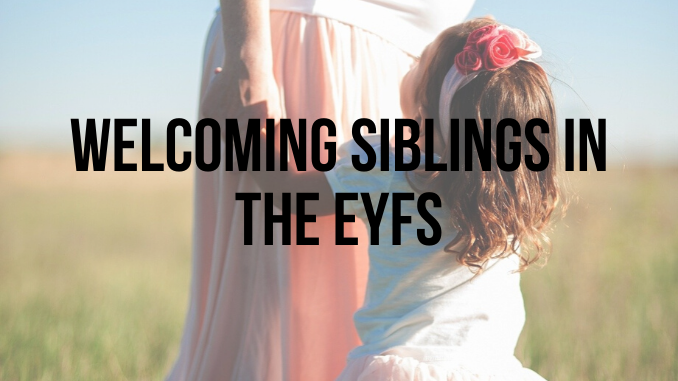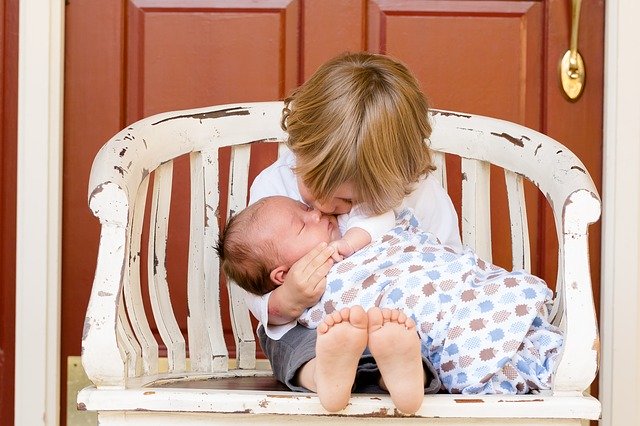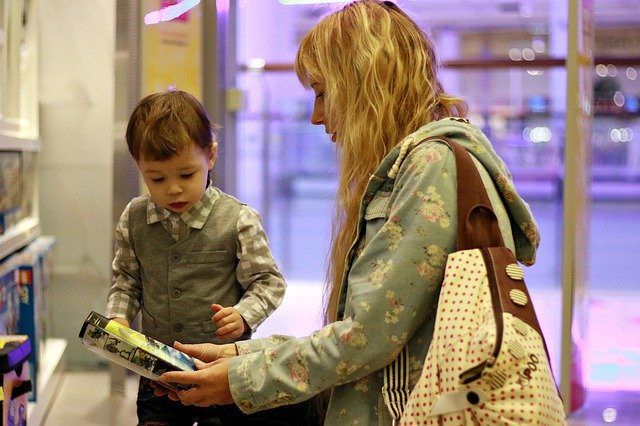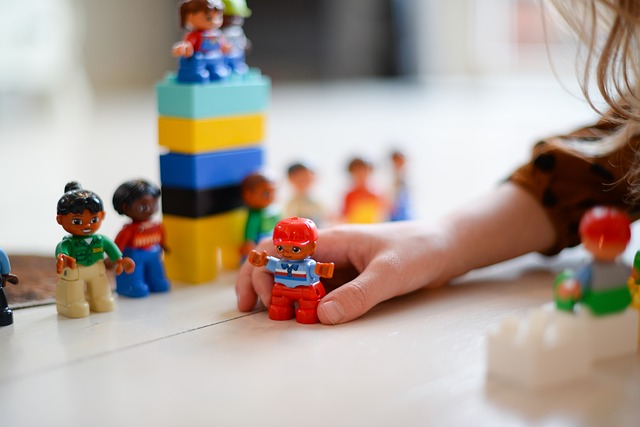New siblings are part and parcel of childcare settings, but for individual families welcoming a new sibling is a life-changing experience and a really special occasion. Adding a child to the family creates a whole new set of relationships, and impacts on all of the relationships already present within the family.
Supporting families as they negotiate all sorts of significant events is part of the responsibility of Early Years settings and supporting families through the arrival of a new baby is significant and important to both individual children and families as a whole.
So how can parents and early years settings work together to support children through welcoming new siblings?
Communicate and take an interest
Ideally, it should go without saying, but communication is key! Practitioners can be supportive by showing that they are interested in the family’s pregnancy or adoption journey. Inquire regularly with the parents, asking “How are you feeling?” and opening up discussions about both the new arrival and their current children. Families are all very different in their approach to pregnancy and adoption and some may love to spill all the details whilst others take a more guarded, or reserved, approach; practitioners should follow their lead! Parents can support their child through the transition of a new sibling by keeping communication with the early years setting as open as possible and discussing issues as they arise, as well as encouraging practitioners to share in the family’s journey and excitement.
Consistency
The arrival, or impending arrival, of a new sibling, can cause disruption in a child’s routines or behaviour. Childcare may become a sort of safe space in which children demonstrate their feelings and challenge boundaries. It’s important for Early Years settings to maintain boundaries and provide consistency in both care and routines as this will help the child with the transition.
Financially it is not always an option for parents to keep their child in Early Years setting whilst they are on maternity/paternity/adoption leave but, if it is at all possible, keeping some sessions will provide some consistency for the child as well as a bit of an outlet for them away from the new baby.
Peer experience
Many children in childcare will have younger siblings and their experience can be used to positively shape that of others. Staff can read stories about different kinds of families and share photos, drawings and discussion about children’s families. This not only helps all children to share about their families but also shows them different family structures and helps those about to become siblings to see that theirs is not an isolated experience. Families can help by sending in information about their families and photographs as requested.
A special kit
Early years setting can consider putting together a special kit for families welcoming new sibling. This could be a special bag or box that families can borrow from the setting with books about becoming a new sibling, a doll and some baby related items, and maybe even a special memory scrapbook will help families feel that your setting is part of the whole experience. It also provides a practical way that families can discuss the upcoming changes with their child, opening up dialogue about what it will be like to have a new addition.
Explore through play
When families let settings know that they are expecting then staff can be mobilised to support children processing this through play. They may, for example, support play in the role play area with dolls or use small world characters to act out scenes that are likely to occur. This helps children to process how their lives may begin to change and what the new family dynamic might look like.
Practical flexibility
When the baby does arrive, settings may find that allowing parents some flexibility with drop off and pick up times at least for the first few weeks will really help as they find their feet and juggle the new logistics of getting everyone out the door on time. Having grace and compassion during this adjustment period will be perceived as supportive by parents, adding to their overall positive impression of the setting.
Know who to call
Some families may need extra support beyond that which an early years setting is able to offer, so it’s important for settings to be prepared to refer them to the appropriate help. Keeping a folder of useful numbers and leaflets could be useful for this.









